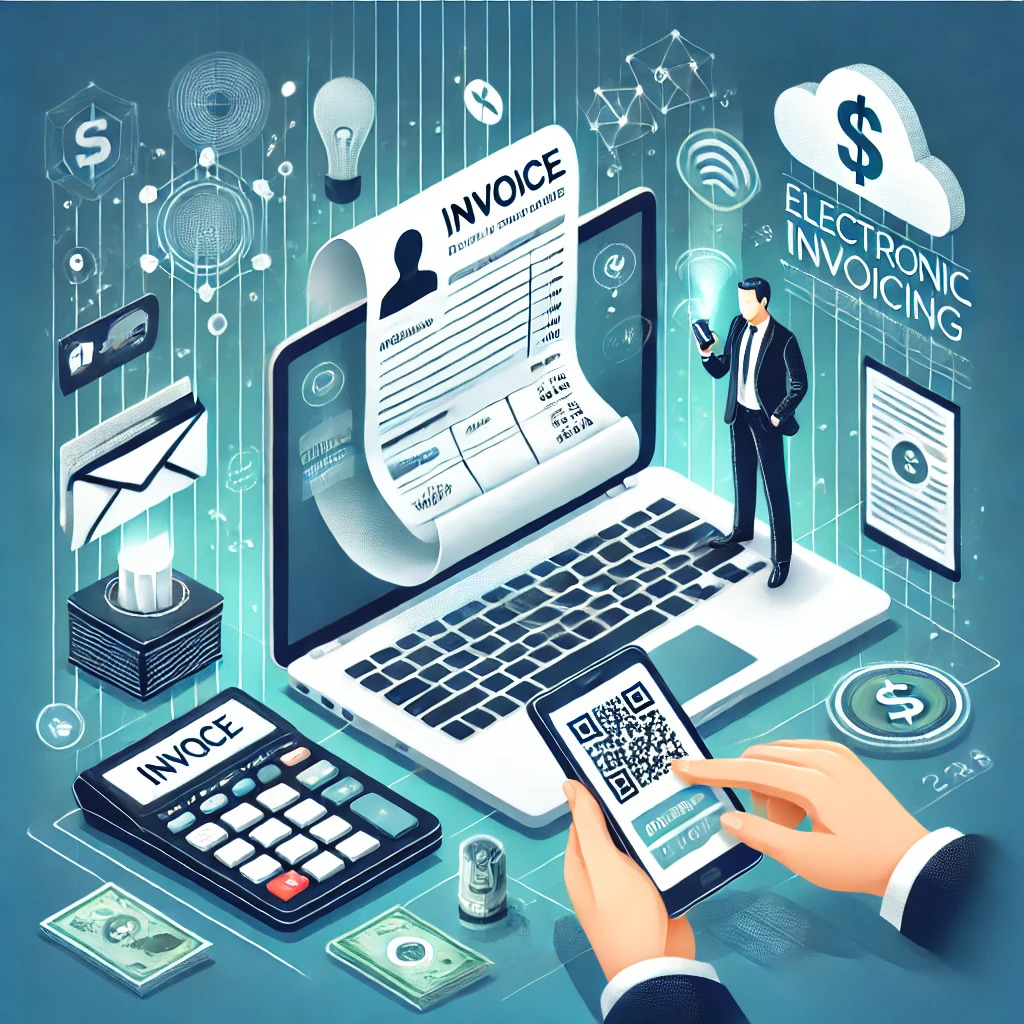
Introduction
In today’s fast-paced digital world, small businesses must adopt efficient financial practices to stay competitive. One of the most effective ways to streamline operations and improve cash flow is through electronic invoicing for small business. This guide explores everything small business owners need to know about electronic invoicing, from its benefits and how it works to the best tools available in 2024.
What is Electronic Invoicing?
Electronic invoicing (e-invoicing) is the process of sending, receiving, and managing invoices digitally rather than using traditional paper invoices. Unlike simple PDFs or email invoices, true e-invoices use structured data formats such as XML or EDI (Electronic Data Interchange), allowing for automated processing by accounting software.
Key Features of E-Invoicing:
- Digital format (XML, EDI, UBL, or structured PDF)
- Automated processing
- Integration with accounting and ERP systems
- Compliance with government regulations (in some countries)
Benefits of Electronic Invoicing for Small Businesses
1. Faster Payments
Traditional paper or email invoices can take days or even weeks to be processed. E-invoicing speeds up the payment process by reducing delays and enabling faster approval.
2. Reduced Errors
Manual data entry is prone to mistakes, such as incorrect numbers or missing information. E-invoicing automates data processing, minimizing human errors and improving accuracy.
3. Cost Savings
Printing, mailing, and storing paper invoices come with hidden costs. Switching to electronic invoicing reduces these expenses, allowing businesses to allocate resources more effectively.
4. Improved Compliance and Security
Governments in many countries, including the UK and the US, are enforcing e-invoicing regulations to combat tax fraud. E-invoicing ensures compliance with tax laws and improves record-keeping.
5. Better Organization and Storage
With e-invoicing, businesses can easily track invoices, search transaction history, and ensure seamless audits.
6. Eco-Friendly Solution
Reducing paper usage helps businesses lower their environmental footprint, contributing to sustainable business practices.
How Does Electronic Invoicing Work?
Step 1: Invoice Generation
- The invoice is created using accounting or invoicing software.
- It contains structured data (e.g., XML, JSON, or EDI format) for automatic processing.
Step 2: Sending the Invoice
- The invoice is sent directly to the recipient’s accounting system via secure digital channels.
- Common e-invoicing transmission methods include PEPPOL, APIs, and EDI networks.
Step 3: Validation & Processing
- The recipient’s system automatically validates the invoice details, checking for errors.
- If compliant, the invoice is approved and scheduled for payment.
Step 4: Payment & Reconciliation
- The invoice is matched against purchase orders and receipts.
- Payment is processed electronically, and the transaction is recorded in the financial system.
Choosing the Right E-Invoicing Software for Your Business
There are various e-invoicing solutions available, but choosing the right one depends on factors such as business size, integration capabilities, and compliance requirements.
Top E-Invoicing Software for Small Businesses in 2024
1. QuickBooks Online
- Best for freelancers and small businesses
- Automated invoicing and payment tracking
- Integration with banks and tax systems
2. Xero
- Cloud-based invoicing for small businesses
- Supports multiple currencies and payment integrations
- User-friendly dashboard and financial reporting
3. Zoho Invoice
- Free invoicing tool for small businesses
- Customizable invoice templates
- Automatic reminders for late payments
4. FreshBooks
- Simple invoicing and expense tracking
- Time-tracking integration for service-based businesses
- Supports online payments through Stripe and PayPal
5. SAP Concur
- Advanced e-invoicing for businesses with international clients
- Integration with ERP systems
- Compliance with tax regulations worldwide
E-Invoicing Compliance and Regulations
Governments are increasingly making electronic invoicing for small business. It’s essential for small businesses to stay compliant with the latest regulations in their country.
UK E-Invoicing Regulations
- The UK follows Making Tax Digital (MTD) regulations, requiring VAT-registered businesses to keep digital records.
- E-invoicing is encouraged but not mandatory for private businesses.
US E-Invoicing Regulations
- The US has no federal e-invoicing mandate, but businesses working with the government must comply with Peppol e-invoicing standards.
- The IRS is moving towards digital tax reporting, making e-invoicing a recommended practice.
European Union
- The EU mandates e-invoicing for B2G (Business-to-Government) transactions.
- Some countries require e-invoicing for B2B (Business-to-Business) transactions, such as Italy and France.
How to Implement E-Invoicing in Your Small Business
1. Choose an E-Invoicing Solution
Select software that integrates with your existing accounting tools and complies with regulations.
2. Train Your Team
Ensure employees understand the new invoicing system and how to use it efficiently.
3. Inform Your Clients and Vendors
Communicate with clients and vendors about the transition to electronic invoicing to ensure a smooth process.
4. Automate Invoice Tracking
Set up automated invoice tracking and payment reminders to avoid delays.
5. Monitor and Optimize
Regularly review invoicing data and optimize processes to improve efficiency and cash flow.
Conclusion
Electronic invoicing is no longer just an option but a necessity for small businesses looking to improve efficiency, reduce costs, and enhance financial management. By choosing the right e-invoicing solution and ensuring compliance with regulations, small businesses can streamline operations and grow successfully in the digital economy.
If you’re ready to switch to electronic invoicing, explore tools like QuickBooks, Xero, or Zoho Invoice, and take your business finances to the next level.





Leave a Reply